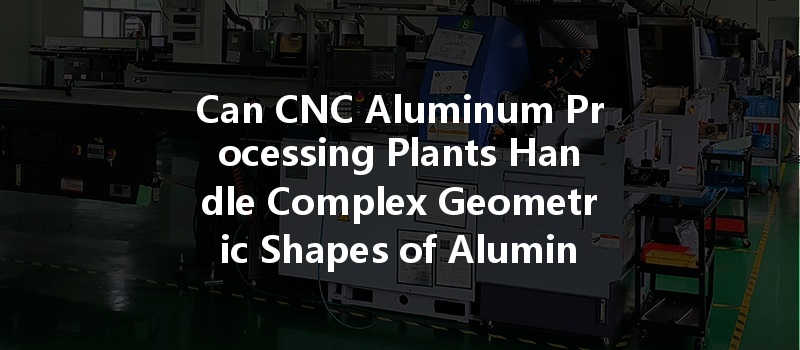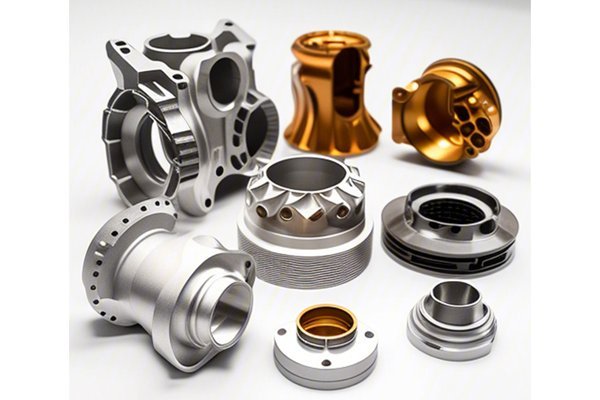*
Did you know that the CNC (Computer Numerical Control) machining industry is expected to grow to $117.93 billion by 2027, driven largely by its capability to handle advanced geometries and materials? As technology evolves, one of the most significant queries in the field of CNC machining remains: Can CNC aluminum processing plants handle complex geometric shapes of aluminum parts effectively? This question highlights the intersection of engineering, manufacturing, and technological advancements, leading to improved product quality and design flexibility.
In this comprehensive guide, we will delve into how CNC processing technology allows for intricate designs in aluminum parts, the inherent challenges faced in this domain, and the innovative solutions that make it all possible. Prepare to uncover the secrets behind transforming conceptual designs into tangible, precision-engineered components.
Understanding CNC Machining in Aluminum Processing
Overview of CNC Machining
CNC machining is a manufacturing process in which pre-programmed computer software dictates the movement of machinery and tools. This method is a cornerstone in the production of precision parts for various industries including aerospace, automotive, medical devices, and more. The equipment can include mills, lathes, routers, and grinders, among others.
Aluminum, with its lightweight properties, strength, corrosion resistance, and ease of machining, is a preferred material in many applications. However, the complexities of aluminum part designs require a high level of precision and expertise.
Why Complex Geometric Shapes Matter
Designing parts with complex geometries can result in significant performance improvements. For example, aerodynamic shapes in automotive design can enhance fuel efficiency, and intricate fittings in aerospace components can save on weight while maintaining structural integrity. The ability of CNC machines to handle these complexities is vital in pushing the boundaries of design and functionality.
The Challenges of Machining Complex Geometric Shapes
While CNC machines offer the capability to produce intricate designs, several challenges can arise, including:
Tooling and Setup
Complex geometries often necessitate specialized tooling, which can be costly and time-consuming to develop. Furthermore, the initial setup of the CNC machine may take longer when intricate designs are involved, leading to longer lead times.
Tool Wear
Machining complex shapes puts unique stress on cutting tools, which can lead to accelerated tool wear. This affects precision and production efficiency if not monitored closely.
Machine Capability
Not all CNC machines are created equally. Some machines, including multi-axis CNC machines, are better equipped to handle complex geometries than others. Knowing the limitations and capabilities of the machinery being used is critical.
Programming Complexity
Programming complex 3D shapes often requires advanced software and a higher skill level. The risk of programming errors can lead to costly mistakes and rework.
Material Considerations
Aluminum has varying machinability based on its alloy and temper, which can influence how effectively complex shapes can be produced. Understanding the specifics of the chosen aluminum material is essential.
Solutions for Effective CNC Aluminum Processing
With these challenges in mind, we turn to several innovative solutions and best practices that can help CNC aluminum processing plants efficiently handle complex geometric shapes.
Investing in high-quality, specialized tooling tailored for specific applications can make a significant difference. Tools designed with cutting-edge coatings can reduce wear and improve cutting efficiency, particularly in intricate shapes with tight tolerances.

Implementing 5-axis or multi-axis CNC machines allows for more complex geometries by enabling cutting from multiple angles without the need to reposition parts. This enhances accuracy and efficiency while minimizing setup time.
5-Axis CNC Machining Explained
5-axis CNC machining refers to the machine’s ability to move along five different axes simultaneously—three linear and two rotational. This capability permits intricate complexities and reduces the number of setups needed, resulting in a higher level of accuracy and speed.
Using advanced Computer-Aided Manufacturing (CAM) software provides powerful programming tools that optimize tool paths and reduce cycle times. Ensuring that operators are well-trained in this software is key for translating complex designs into manageable machining processes.
Establishing a robust quality control program* throughout the machining process is paramount. Implementing techniques such as in-process measurements and inspections can help catch issues early and ensure that all parts meet precise specifications.
Proactive maintenance of CNC machines ensures that they remain in peak condition, significantly reducing unexpected downtime and improving overall machining accuracy. Setting up a routine check system is productive in catching potential issues before they arise.
Operators armed with advanced training can better navigate the complexities of CNC programming and machine operation. Regular training sessions covering programming, troubleshooting, and advanced machining techniques can lead to higher quality output.
Selecting the right grade and alloy of aluminum can enhance machinability. For complex geometries, choosing alloys known for durability and machining ease can make all the difference. For example, 6061 aluminum is popular among CNC machinists due to its versatility and optimal mechanical properties.
Case Studies and Real-World Applications
To illustrate these solutions in action, let’s review some case studies demonstrating successful CNC aluminum processing of complex geometries.
Case Study 1: Aerospace Component Production
A leading aerospace manufacturer faced challenges with intricate aluminum brackets used for aircraft assembly. The company had previously relied on 3-axis machines, which led to frequent setup changes and longer lead times.
By transitioning to a 5-axis CNC machine, they reduced setup times and improved part accuracy. The development of specialized cutting tools, designed for aluminum alloys, helped reduce tool wear, leading to significant cost savings.
Case Study 2: Automotive Design Improvements
A company specializing in automotive parts proposed a design that required extensive machining of a complex engine housing. The intricacies of the design presented challenges in both tooling and programming.
Utilizing advanced CAM software allowed for optimized tool paths, while additional operator training facilitated flawless execution. As a result, not only did the company meet production deadlines, but they also enhanced product performance due to improved dimensional accuracy.
Navigating the complex world of CNC aluminum processing plants requires a blend of innovation, skill, and technology. By investing in advanced tooling, utilizing multi-axis machines, employing sophisticated CAM software, maintaining strict quality control, and continuously training operators, manufacturers can effectively handle complex geometric shapes in aluminum parts.
As the CNC machining industry continues to evolve, it is imperative for businesses to embrace these strategies to stay competitive and meet the rising demands for precision and complexity in manufacturing.
The central theme of this blog highlights the importance of adopting modern practices and technologies to confront the challenges of machining complex geometries. As a reader, you now possess valuable insights into why bringing precision and complexity together in aluminum processing is not just viable but essential.
In conclusion, consider the impact of CNC machining within your industry, as understanding the techniques and technologies available could not only improve your design capabilities but also lead to greater innovation and manufacturing efficiency. The future of manufacturing is here, and complex geometries in CNC aluminum processing will play an integral role.






